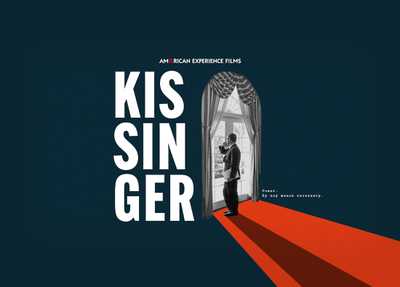Raymond D'Addario was 26 years old when the U.S. Army assigned him to photograph the Nuremberg War Trials from 1945 to 1946. D'Addario also spent time in the former Nazi capital of Berlin, which was occupied by Soviet, American, British and French troops. There he documented the hardships of Berliners' daily lives.
Browse some of D'Addario's Berlin images.
-
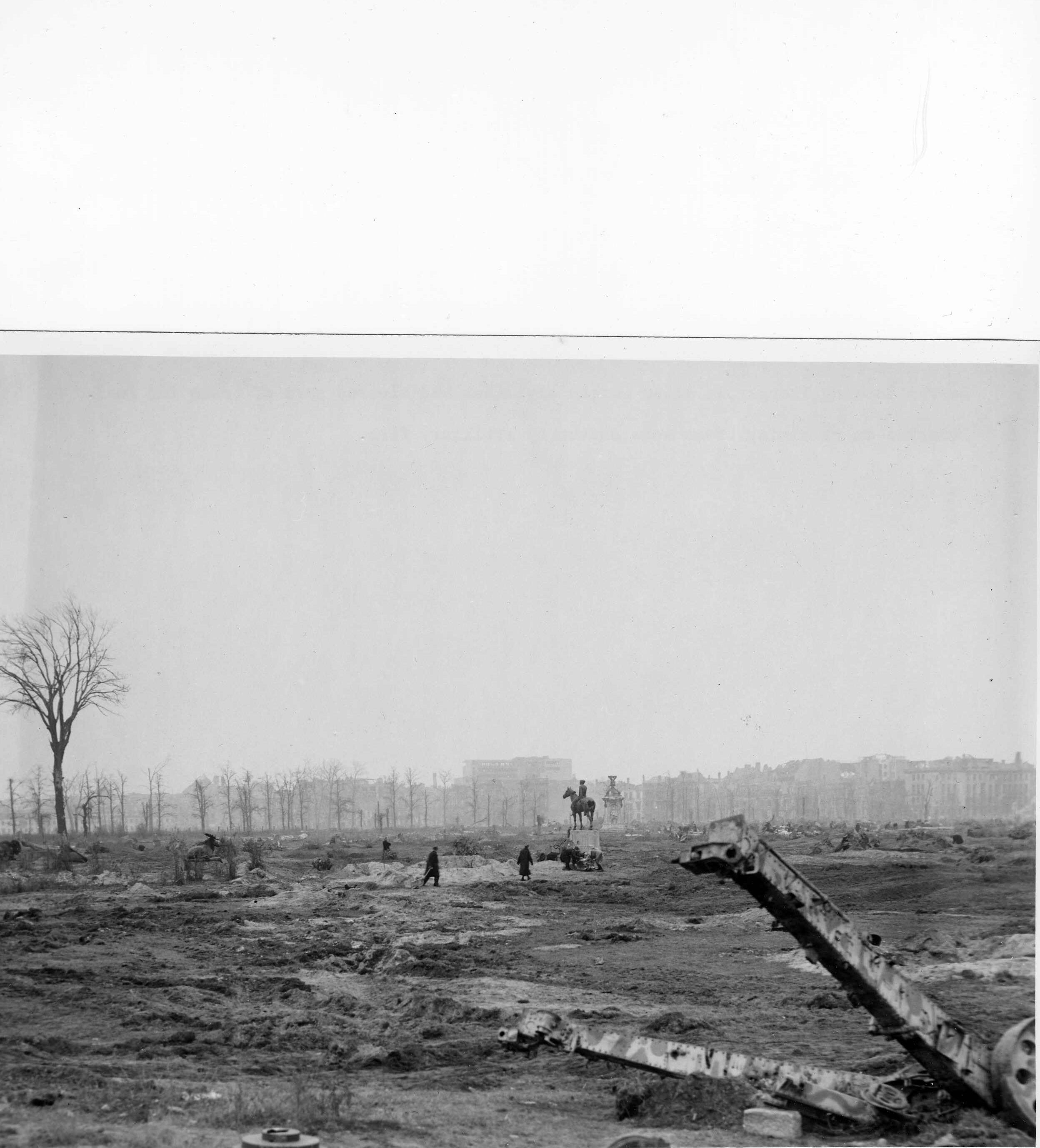
After the war, the Tiergarten park in the city center was a wasteland. The people of Berlin had cut down the trees to use as firewood.
Credit: Ray D'Addario -
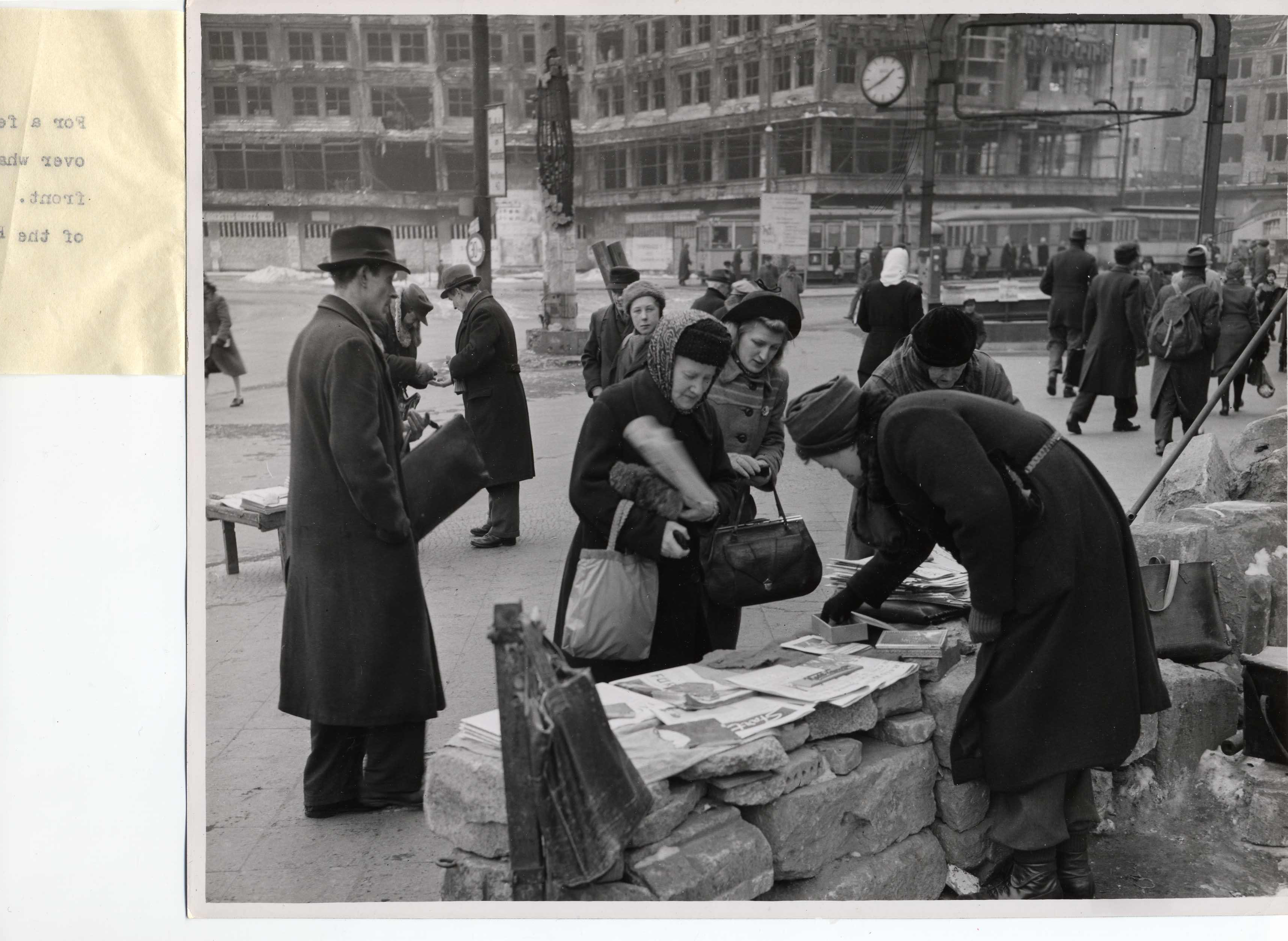
Buildings in Alexanderplatz, which had been a bustling commercial center before the war, were destroyed. A vendor sold newspapers from a makeshift wall built from rubble.
Credit: Ray D'Addario -
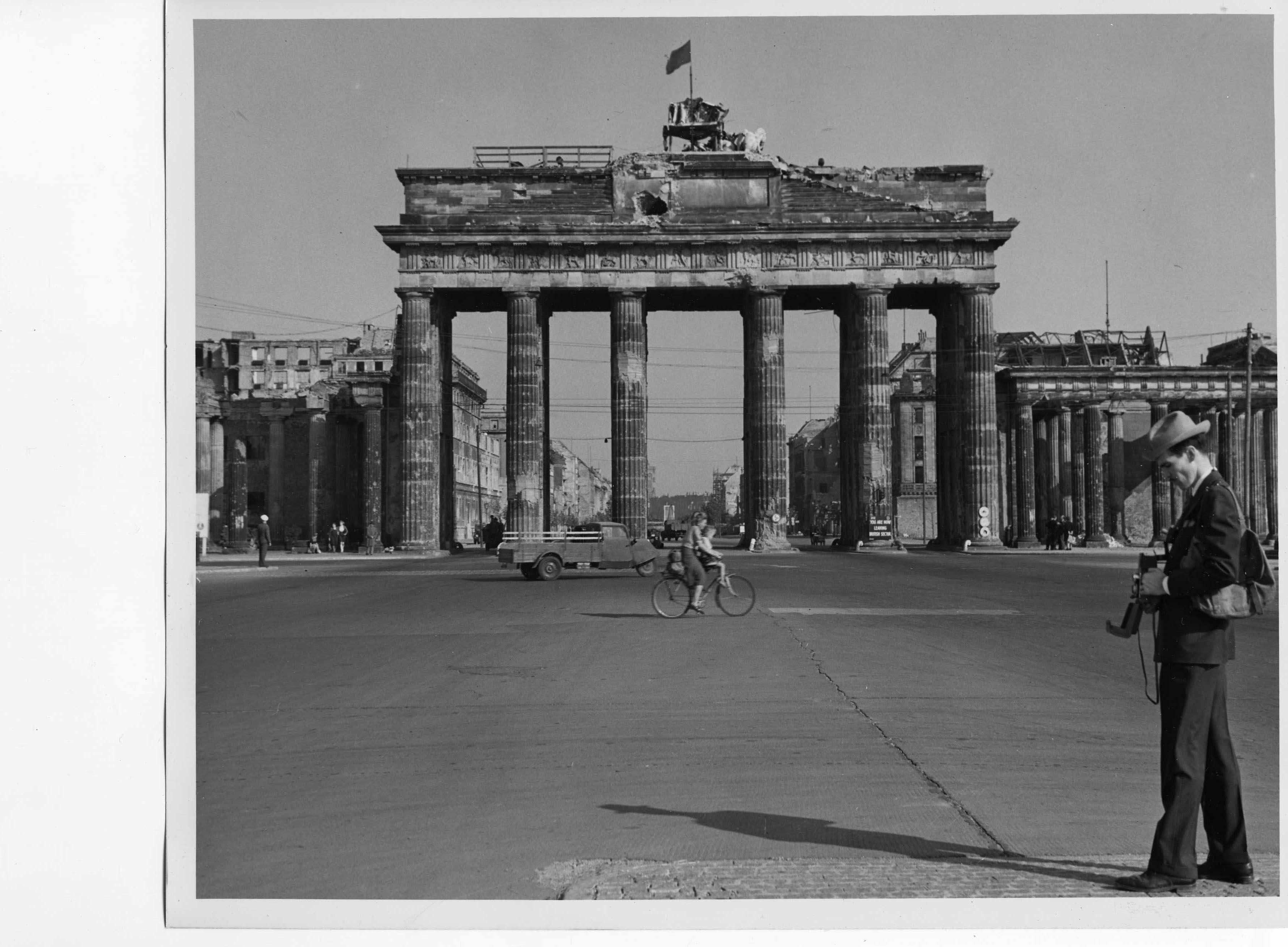
The Brandenburg Gate, built in 1791, was still standing. It would soon be incorporated into the Berlin Wall, which would divide the city into East and West sectors during the Cold War.
Credit: Ray D'Addario -
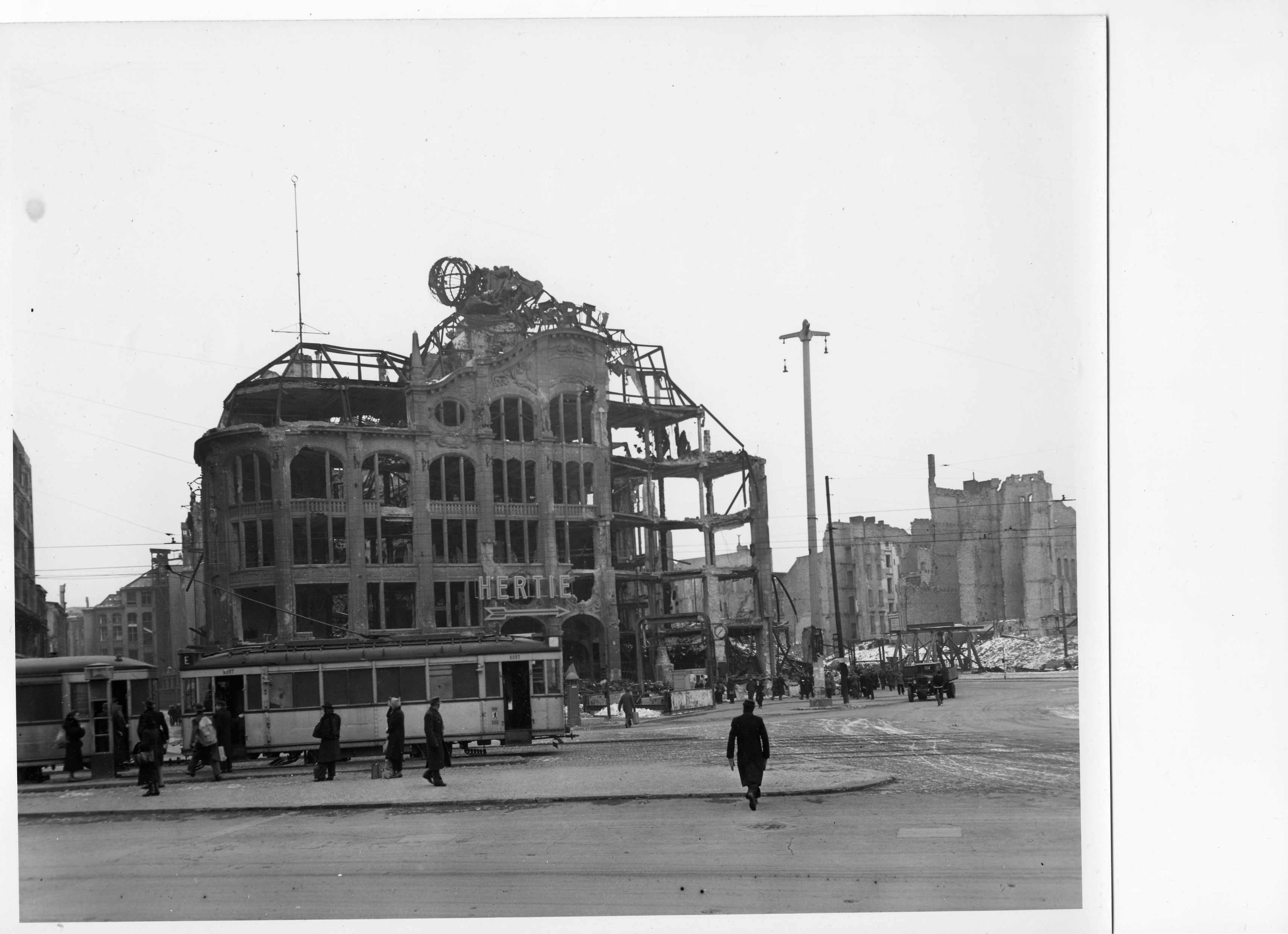
Hertie, a large department store, was gutted.
Credit: Ray D'Addario -
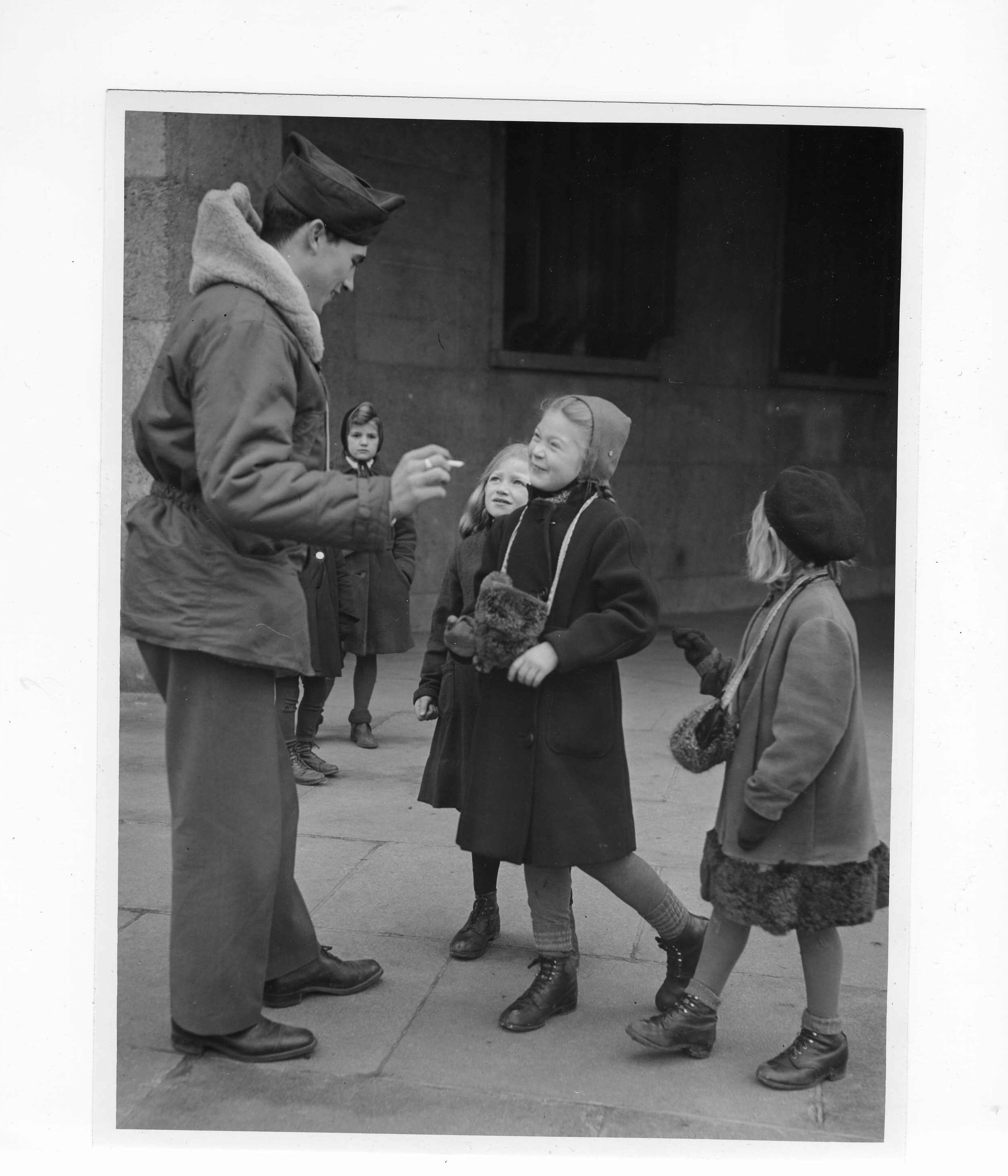
German children, on orders from their parents, asked occupying soldiers for cigarette butts.
Credit: Ray D'Addario -
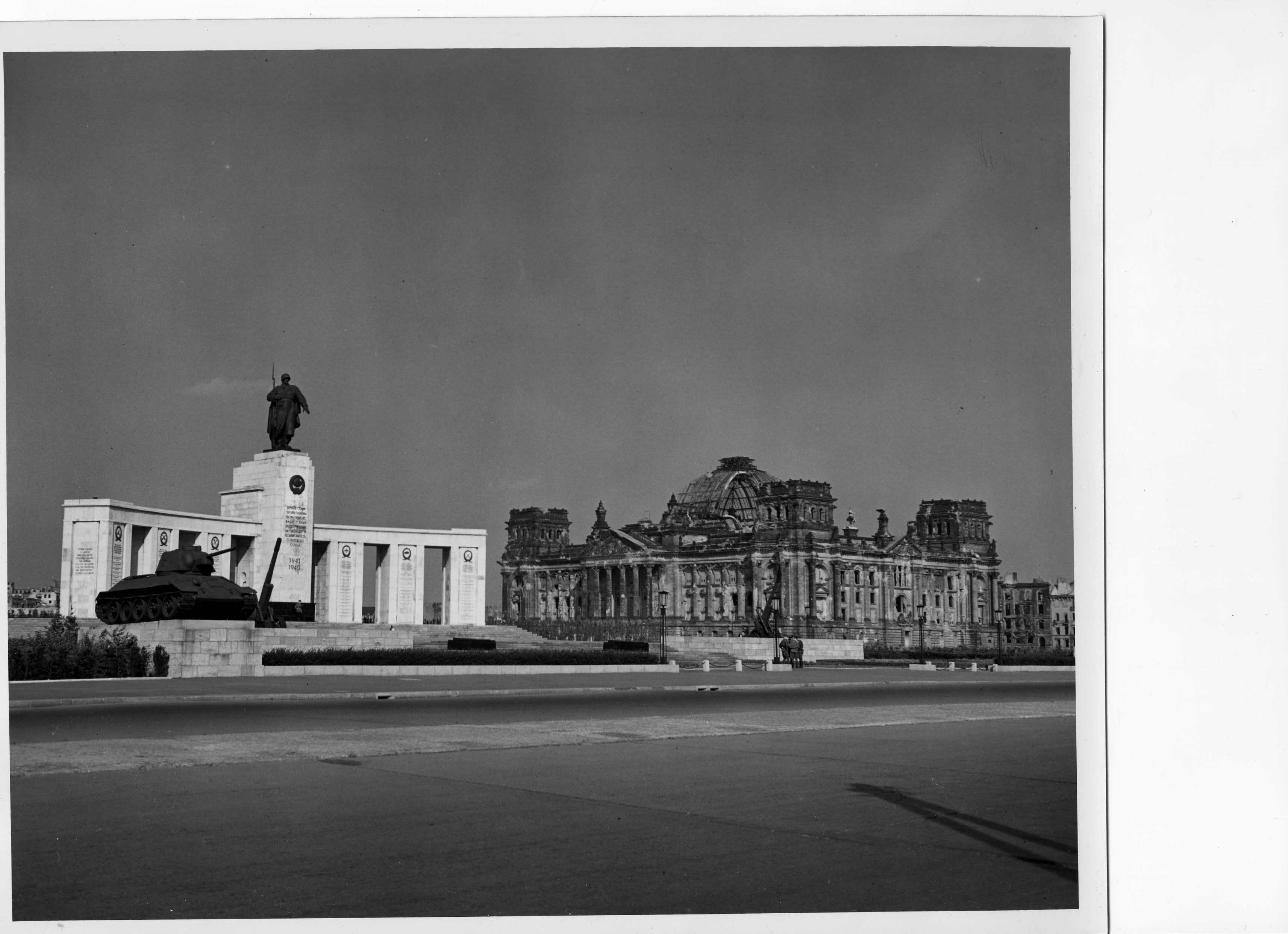
D'Addario photographed a brand-new memorial honoring Soviet soldiers who died fighting in Berlin. When the city was partitioned, the memorial ended up on the Western side, making it inaccessible to the Soviets except on special holidays.
To its right is the Reichstag building, where the German parliament met from 1894 until 1933 when Hitler rose to power. At the end of the war, it was heavily damaged. In 1999, ten years after the fall of the Berlin Wall, the renovated building would reopen as reunified Germany's seat of government.
Credit: Ray D'Addario -
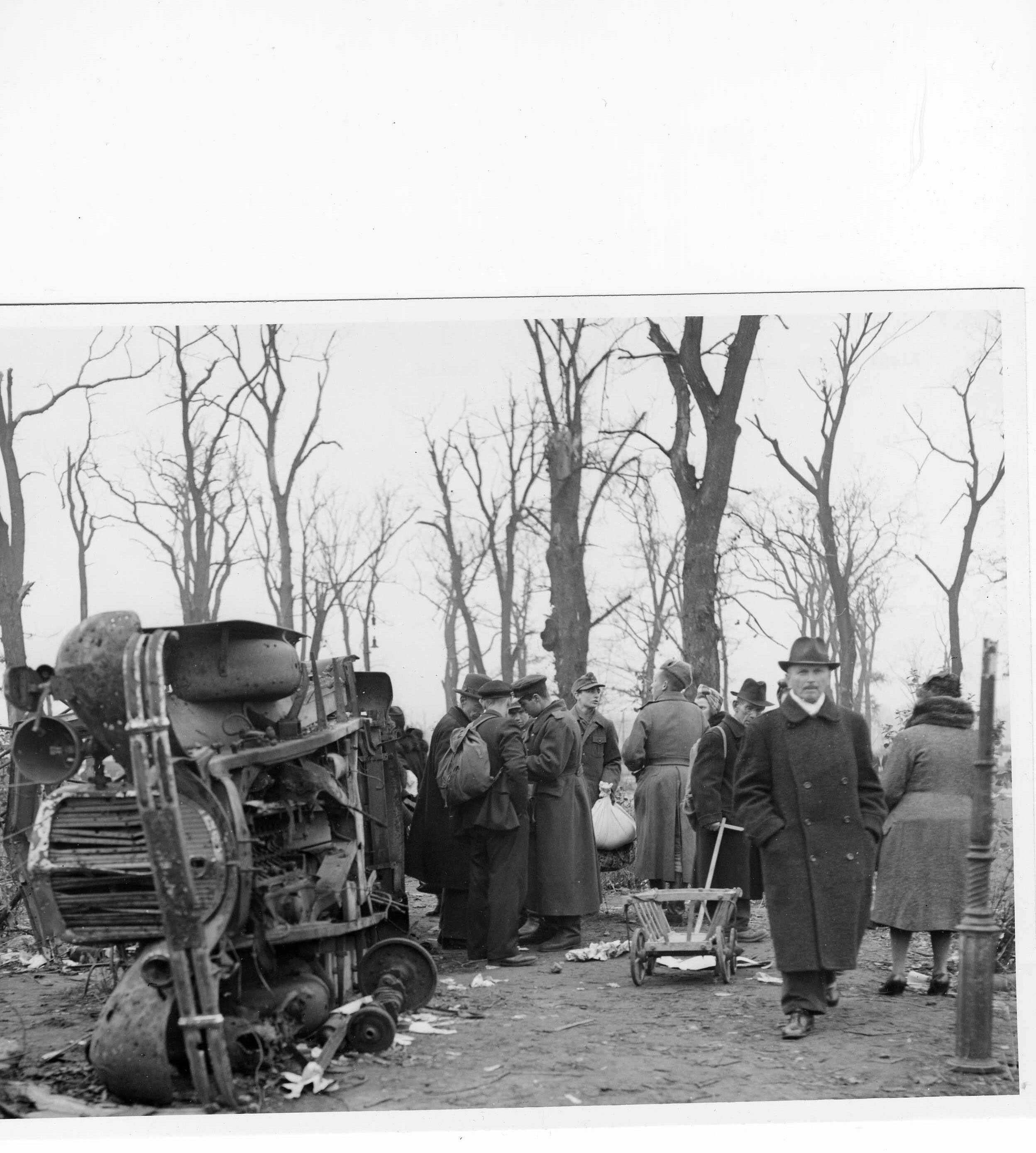
People gathered near the Tiergarten to buy black market goods.
Credit: Ray D'Addario -
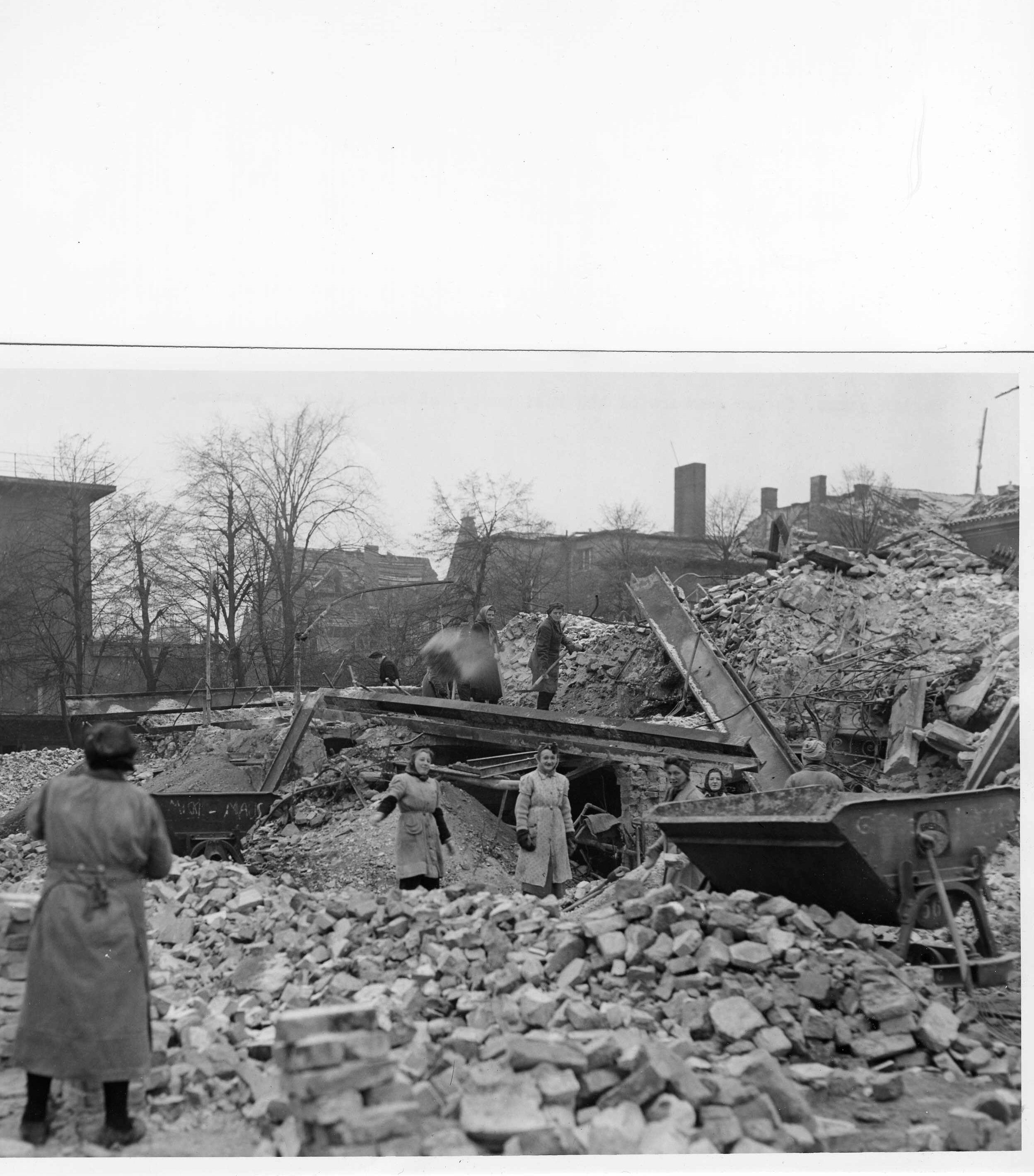
These Berlin women worked to clear the wreckage of a bombed building.
Credit: Ray D'Addario -
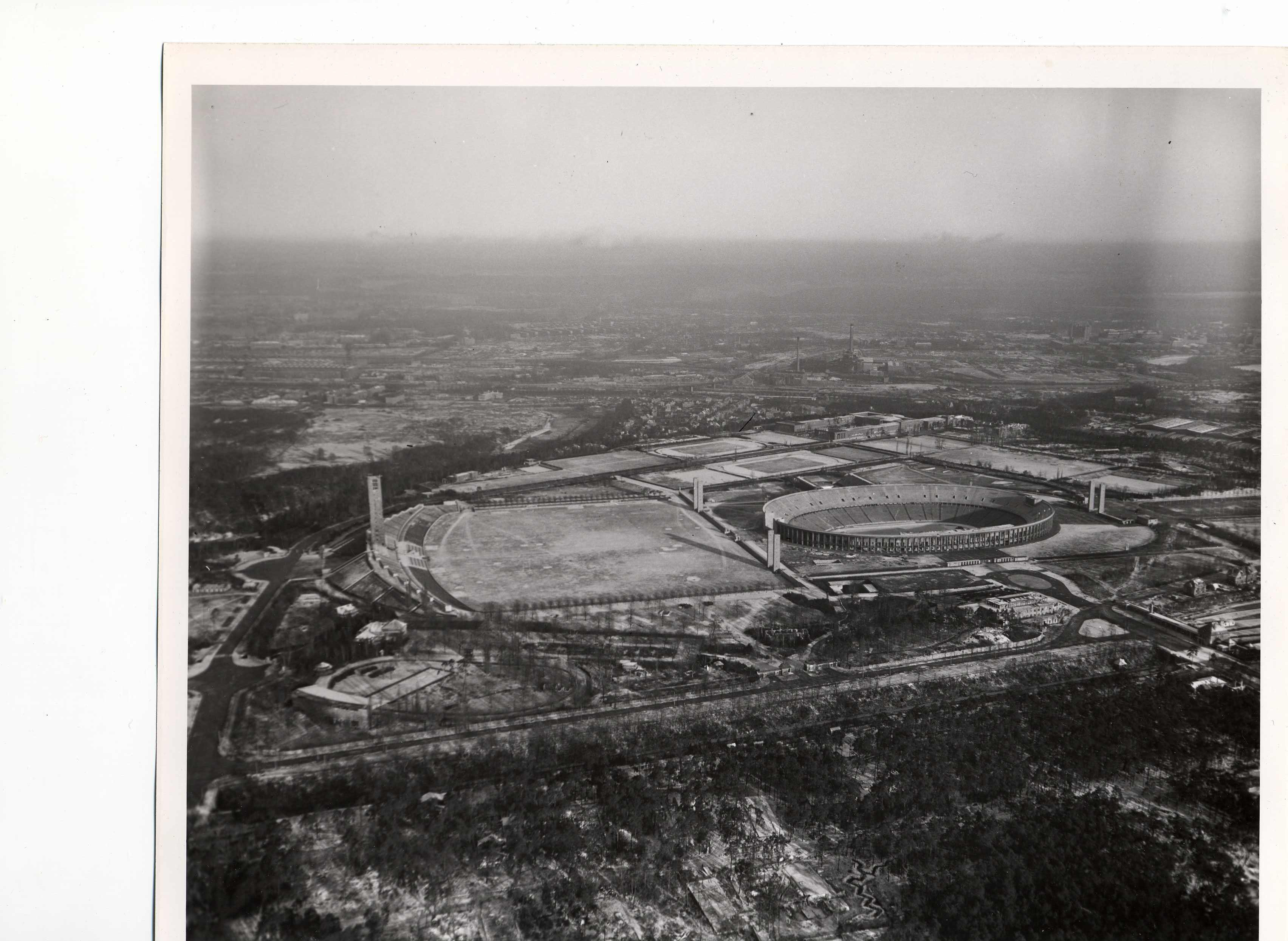
The massive Olympic Stadium, which the Nazi party built for the 1936 Summer Games, survived the war with little damage.
Credit: Ray D'Addario -
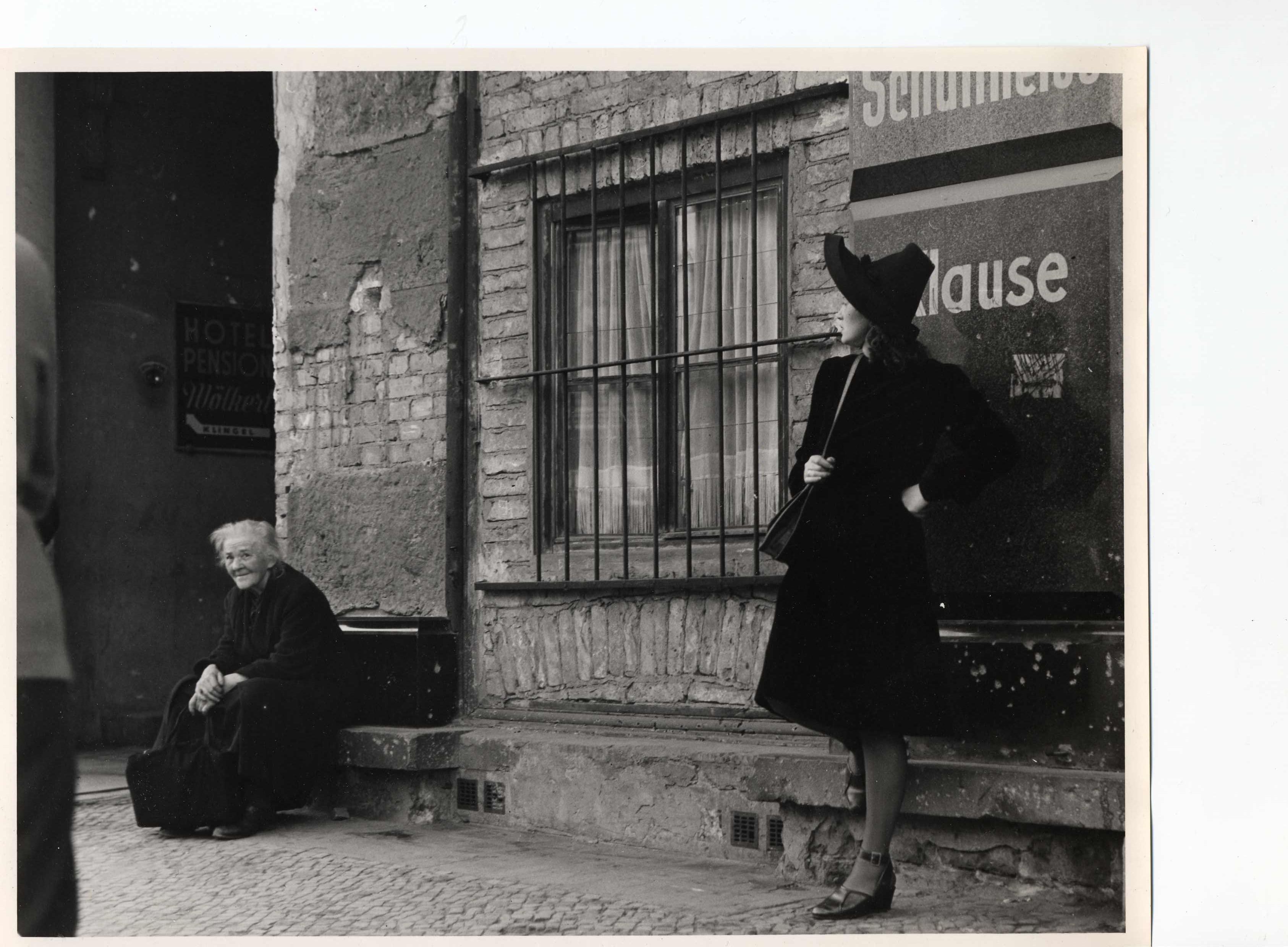
Some women, like the one here on the right, worked as prostitutes.
Credit: Ray D'Addario -
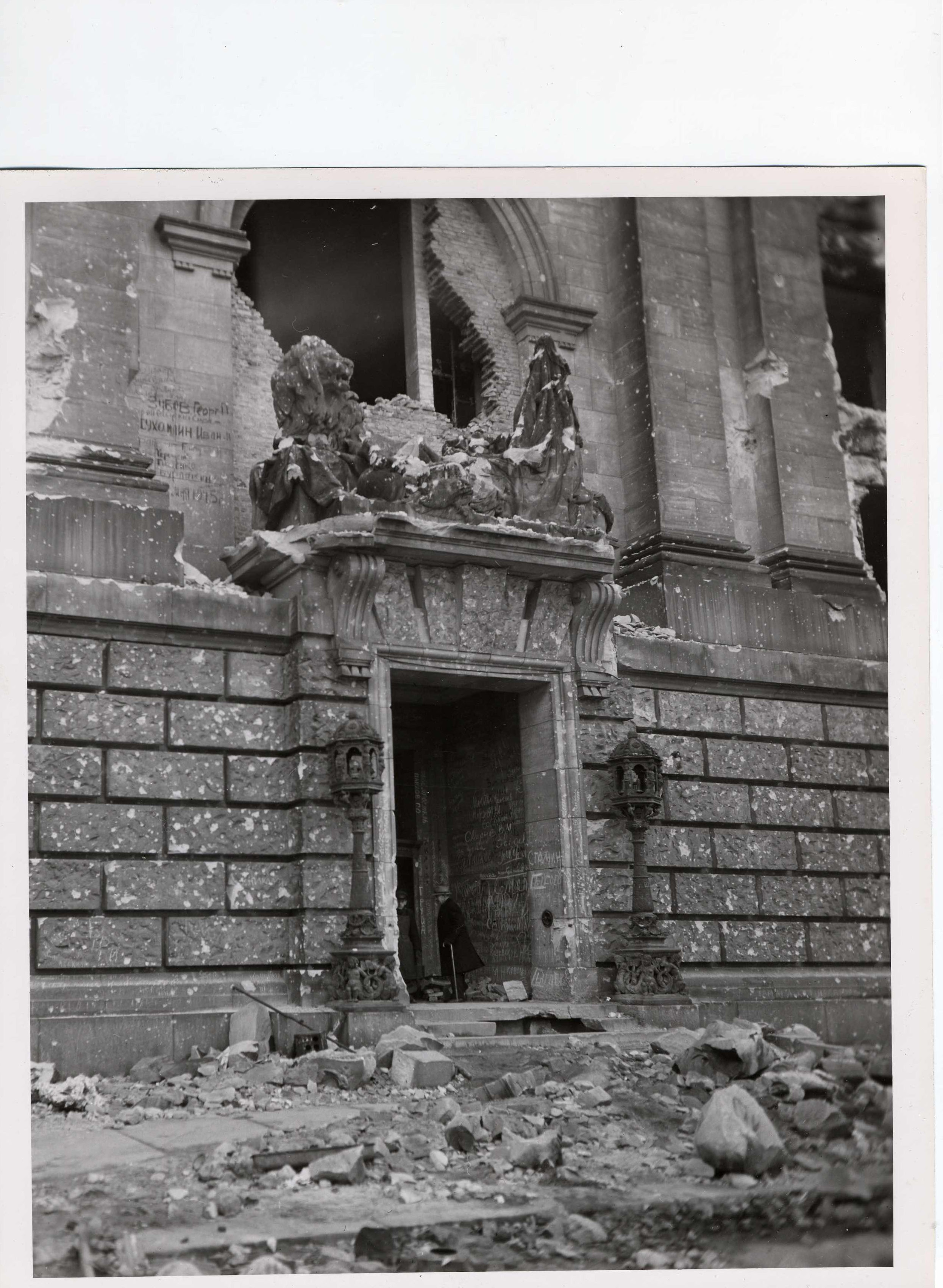
The Reichstag building was pocked with bullet holes and craters, and surrounded by masonry fragments.
Credit: Ray D'Addario -
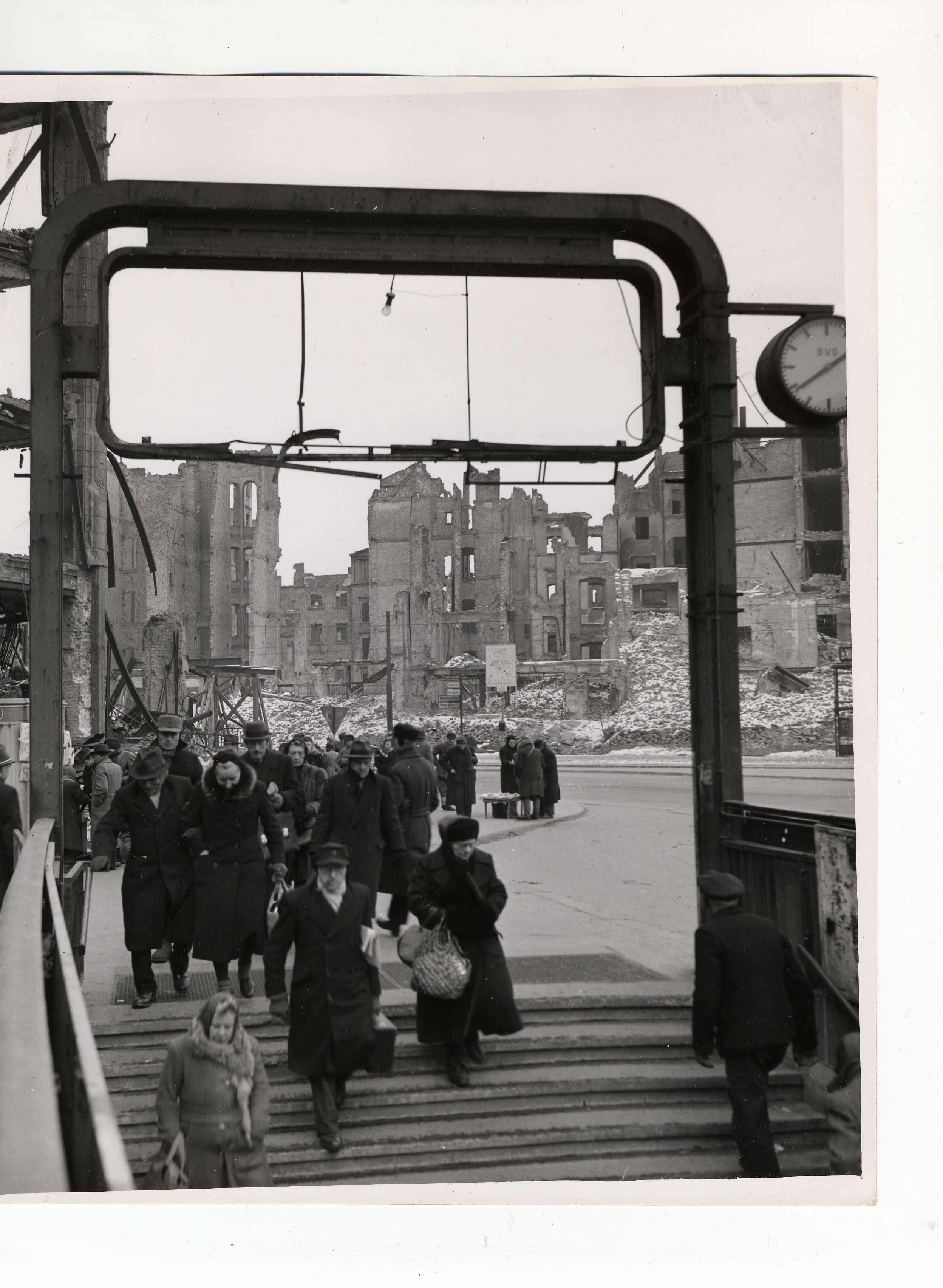
The Berlin subway, called the U-Bahn, was operational, but all public transportation stopped at 9:30 p.m. The destroyed buildings of Alexanderplatz are visible behind the commuters.
Credit: Ray D'Addario
